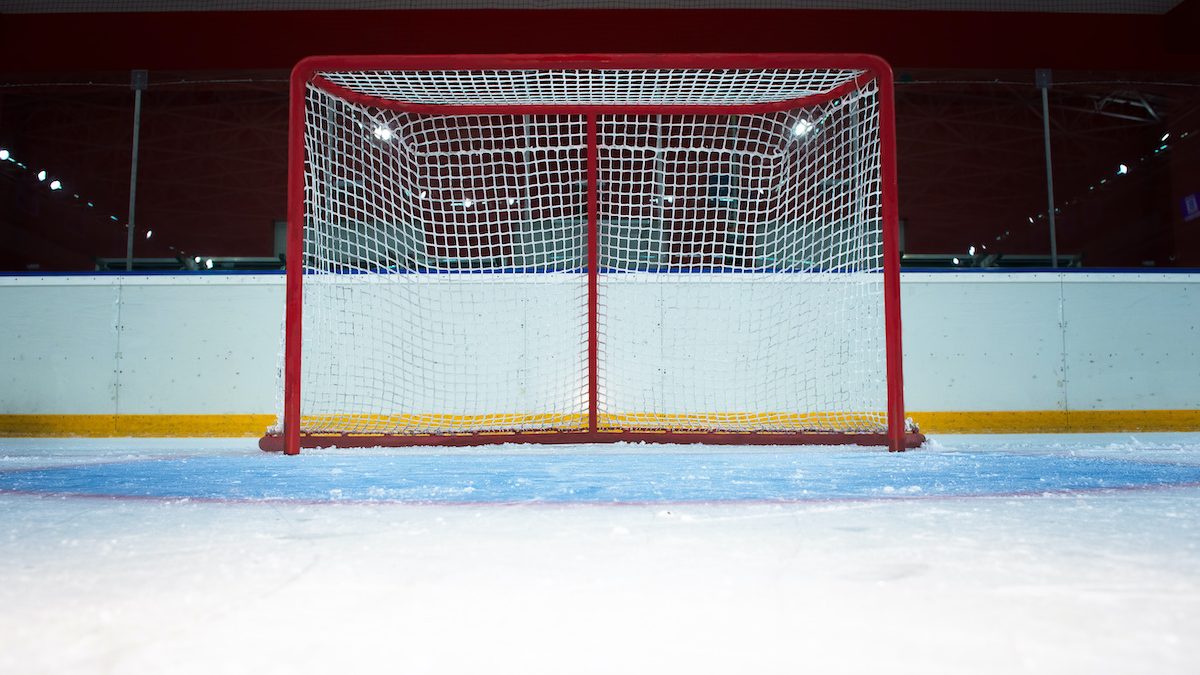The trend in hockey is undeniable. When their teams are trailing in close games, coaches are pulling their goalies for extra attackers earlier and earlier in games.
For generations, the strategy was simple: If your team was trailing by one (or maybe two) late in the third period, the coach pulled the goalie so an extra attacker could go on the ice, creating a six-on-five situation. The drawback? The team in the lead had a yawning cage to target.
But, coaches have ploughed on with this strategy. In fact, they’ve expanded on it. In close games, it’s become commonplace to see goalies on the trailing teams vacate their nets with three or four minutes left in games.
In Sunday’s 4-1 win over the New Jersey Devils, Evander Kane scored the insurance goal after Akira Schmid had left the opposition net for an extra attacker. There was about four minutes left in the game when he skated to the bench.
So, with a bit of an out-of-left-field question in the post-game press availability, I asked Oilers coach Kris Knoblauch “how early is too early to pull a goalie?”
“Teams are pulling the goalies early, four to six minutes (left), depending on the score,” he said. “You’re going to have at least nine forwards, possibly 12 who are going to be in those situations.
“I know last year (in the AHL), I pulled my goalie, I don’t know if it was 12 or 10 minutes left in the third period. But situations are different. If there’s an offensive zone powerplay, or an offensive zone face-off, I think it’s more beneficial to pull that goalie just because of the advantage it gives to you.”
So, if you’re down in the third, and the chance that’s too good to pass up presents itself — don’t be afraid to bring the netminder to the bench. And it’s easy to understand that mentality — hockey is a game that rewards those who maximize their opportunities.
Or so we think. (More on this later.)
“I think earlier, the better,” he said. “It is easier to pull early if you’re organized, and the best way to be organized is starting off with a face-off in the offensive zone.”
Knoblauch basically predicted his own actions, because on Thursday night, with the Oilers down 5-3 and on the power-play, he pulled goalie Stuart Skinner with about four and a half minutes left in the third. The Oilers got one goal back (after the power-play expired), but then gave up two empty-netters. Final score, 7-4.
In maybe the most Canadian university study ever conducted, researchers David Beaudoin of Université Laval and Tim B. Swartz of Simon Fraser University concluded that NHL teams would benefit if they took more aggressive stances when pulling their goalies. They wrote this study about 15 years ago, when teams were still pulling goalies with about a minute to 90 seconds left in games. After simulating millions of games, this is what they found:
“An average team can increase its expected number of points by one over the course of an 82-game season by simply pulling the goalie when trailing by any number of goals with less than three minutes left. A more aggressive approach results in an improvement over the current strategy by 1.5 points.”
But, there was a caveat to all of this. If all 32 teams adopt the same aggressive strategies, they cancel each other out. It’s why coaches always have to keep innovating.
“Of course, if every team were to adopt improved strategies for pulling the goaltender, an advantage would cease to exist,” the researchers wrote.
A POOR SUCCESS RATE
So, in a modern NHL where the coaches look to be outdoing each other when it comes to how early they pull their goalies when trailing in games, let’s take a look at how well it works.
Well, at least in the context of the Oilers.
Over the course of this season, as well as the 2022-23 regular season and playoffs, the Oilers have been involved in 70 games where the goalie was pulled in the third period. In 40 of those games, it was the opponent who pulled the netminder.
Of those 70 games, only four resulted in the team with the pulled goalie scoring a tying goal. Four. That’s a success rate of a little less than six per cent — or, to put it mildly, a powerplay that would get any special teams coach fired in this league.
In 36 of those 70 games, the team with the lead got at least one empty-net insurance goal.
Pulling the goalie failed 66 of 70 times, and the game was put out of reach 36 of 70 times.
Over those 70 games, a little over 98 total minutes were played with a goalie pulled. The trailing team scored nine times, while giving up 37 empty netters. Five of those goals were scored when the trailing team was down by two goals, and did not result in comebacks. So, they were essentially meaningless. That’s why nine goals resulted in a total of just four comebacks.
Nine goals produced in 98 minutes of play is pretty healthy. But, is the risk too high to take this strategy for three or four minutes of play… or even longer? Because, when you pull the goalie, you are about 4.5 times more likely to get scored on than score.
And, of those eight goals, two were not six-on-five goals. In one comeback, the St. Louis Blues had taken a penalty, and had pulled the goalie to get to the five-on-five. It paid off. And, the Los Angeles Kings tied the Oilers late in the third by pulling the goalie when they were already on the powerplay, resulting in six-on-four.
What the study from the university profs warned is that, while it worked for the Kings, pulling the goalie when on that power-play needs to be done with caution.
Again, these numbers are based on simulations from when the NHL was a lower scoring league back in the late 2000s, but the ratios should still be true: “Based on the data, teams that decide to put an extra attacker on the ice to create a 6-on-4 situation score a goal every 5.5 minutes and allow an empty-net goal every 4.8 minutes. In other words, not only does the strategy force a goal to be scored more quickly, but teams that pull their goalie are almost as likely to score a goal as to allow one.”
Because the penalty-killing team can fire the puck down the ice with no fear of icing, it becomes an advantage to them to have the opponent’s net empty. So, instead of having a five-on-four with a success rate of about 20 per cent (which is the median in the modern NHL), the coach basically turns it into a 50-50 situation by pulling the goalie.
So, have we reached the point where the reverse is now true, and you’re better off waiting to pull the goalie until late, late in the game, when you do get that offensive zone face-off, in a situation you can control?
Maybe this is crazy talk, or the sanest voice in the crowd, take your pick — is the next innovator going to be the coach who leaves his goalie in?
Savvy AF. Blunt AF. Edmonton AF.




